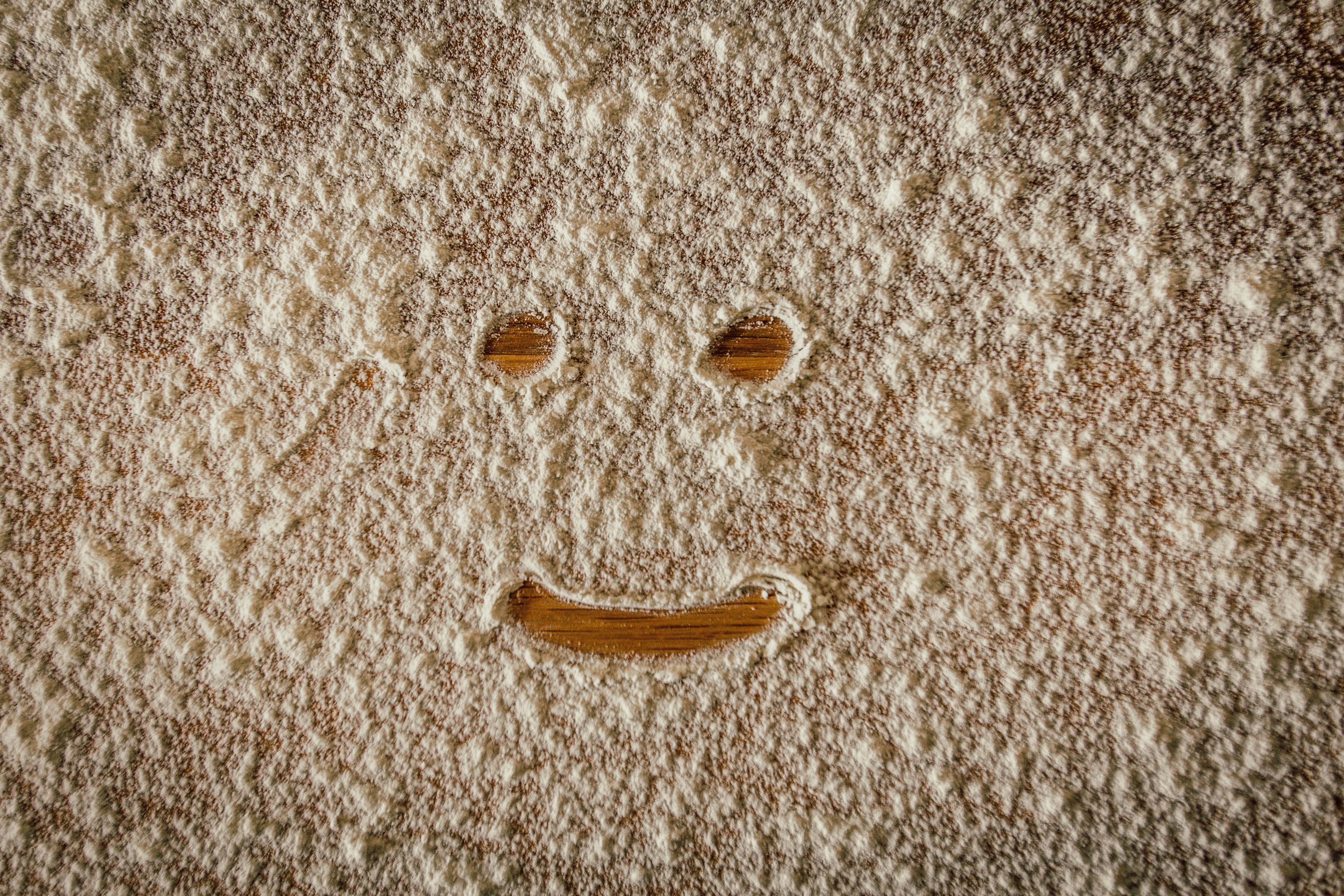The Legend of a Doughboy
The Poor Skinny Boy
This tale starts off with a small boy named John who grew up poor in the state of New Hampshire during the 1800s. He lived in a cabin in the woods. His family often ran out of money. Many of John’s meals were rationed among him and his siblings before they were distributed. John eventually became jaded with regards to his family’s financial situation. He developed maladaptive sleeping habits to combat his malnourished state. He rested whenever he finished his chores. His chores consisted of harvesting crops and collecting firewood. Even with an empty stomach, John was enamored of the scenery outside his cabin. Trees as tall as the Eiffel Tower, lavished with lovely leaves, spanned across the landscape by his living quarters. Across the forest laid a large lake with minty cool mist that levitated above it.
After a handful of years, John decided to become an apprentice for a baker. This baker was touted by many as the best baker in New Hampshire. This baker sold dozens of fluffy foods – bread, cookies, cake, croissants, brownies, pizza, and much more. During his time as an apprentice, John learned important concepts and skills of baking. He learned about fermentation, baking soda, baking powder, flour, sugar, etc. Because baking is a hands-on activity, hypotheses and theories involving baking could be tested readily. This, in addition to being surrounded by fresh food, brought the topic of baking to life. Throughout his childhood, John had struggled to stay sharp in a stale school room environment. Sitting in a classroom bored him.
The Boy Becomes a Baker
Once John mastered the skills of baking, he took over the shop. His master, a frail old man, retired and went to live his remaining years with his children and grandchildren. John swiftly segued into his new position without any hurdles. Since the company’s location stayed the same, John knew which goods were in demand at which times. The influx of townsfolk was consistent as well. The majority of customers were regulars, making it easier to decide which foods to prepare.
However, as automobiles became increasingly more popular, new customers began to appear. The lines to his store gradually got longer and longer as time went by. John had to hire help to meet increasing demand for his goods. He picked a nephew of his named Charles to be his assistant. Charles was a boy who came from a poor family like his uncle. He had the skinny legs of a stork and the observant eyes of an owl. Charles, an innocent young boy, was in love with life and living, despite being poor. He enjoyed being out in nature. Unlike his uncle, who’s favorite season was autumn, Charles favorite season was winter. He would often play in the snow during the coldest months of the year.
Wheat Runs Out
After months passed by, winter has approached. Charles was in luck. The bad news was that several stalks of wheat have been infested with a persistent pest – a new bug from outside New Hampshire. With less crops from which to make flour, the bakery was bound to suffer. To take his mind off the stressful situation, Charles went out into the snow to build a snowman. In the mood for creativity, Charles decided to build a snowman with big blue buttons for eyes, a white scarf, and one of his old chef hats. He left the scene.
When he came back to where the snowman was located, Charles noticed that the snowman was gone. No worries; the snowman has probably been blown off by the wind. Charles collected snow to construct another snowman. As Charles gathered some sticks, he noticed a large figure in the woods. Was it a polar bear walking on two legs? No, polar bears don’t exist in America. Was it a mythological creature known as Sasquatch? No, the figure was pudgy. It also had a smile on its face. It also had big blue eyes, a white scarf, and a chef hat. Not only that. It seemed to have grown legs and arms, along with a white nose.
Nephew Meets the Snowman
Upon seeing the walking snow, Charles was stunned. Lions, tigers, and bears are real. Bigfoot, the Loch Ness Monster, and Jersey Devil are widely known cryptids. But this, snow that moves on its own, can’t be real. Charles’ head would have spun less had he seen a UFO in the sky. With dimples puffier than pink cotton candy, the snow walks towards the boy. “Hello Charles,” said the snow. “Hey,” responded Charles with his eyes wide open. “You look sort of like the snowman I built yesterday.” “I am,” said the snowman. The boy asked how the snowman came to life. The snowman explained that he is a nature spirit that decided to incarnate into the snow. Nature spirit? Indeed. Native Americans have passed on myths about these spirits since time immemorial.
Perplexed, yet also piqued, Charles inquired for the spirit’s name. “Pillsbury,” said the spirit. Pillsbury? Who has ever heard of such a spirit? “I’m the spirit of wheat.” As the boy and spirit continued their conversation, the boy told the spirit about his uncle’s shop. He told Pillsbury that the bakery had less flour than normal due to the shortage of wheat. The boy asked if the spirit could help him resolve the issue. The spirit said that it could if the boy gives the credit where it’s due. “Deal.”
Uncle Meets a Spirit
After his agreement with Pillsbury, Charles walked back to his uncle’s bakery. Knowing that his uncle believed in the existence of zero spirits, Charles told John that a friendly man had loads of wheat stored in an underground chamber. Suspicious, John asked Charles if he could meet the man in person. Charles answered affirmatively. On the next day, Charles met with the spirit and asked if it could meet with John. The spirit said it could, but only at night. Charles asked why the spirit couldn’t come to the shop during the day. The snowman said that it didn’t want to attract the attention of somebody who’d want to capture it.
As Charles entered the shop, clever as a crow, he told John that the man was tending to a sick wife and child and waiting for them to fall asleep so that he could meet the shop owner. The uncle, skeptical of the existence of hidden wheat, waits on his porch for the arrival of another man. As the sun finished setting, a strange dark figure appeared to be moving toward the shop. John, frightened, ran to get his gun. As he pointed the gun to the shadowy shape, Charles stopped him. “That’s the man.” “That’s no man,” John rebutted. The snowman, smiling, greeted John. Stunned, John had nothing to say.
After introducing itself, the snowman relayed the deal that Charles agreed to. John inquired about the underground chamber Charles mentioned. The snowman denied having a chamber, but confirmed that John’s trouble with his bakery would come to a close. From the beginning of a winter storm, a powerful gust of wind hit the snowman. The snowman disappeared.
A Legacy Long Lived
While facing the storm, John and Charles were stunned. The uncle asked, “That’s it?” After John closed and locked the shop door, him and Charles went to the kitchen. On top of the sink, there was a strange note and two glowing white bracelets. The note contained two bits of information; one, the location of an enormous pile of wheat; two, a recipe to make some fluffy, flaky biscuits. According to the note, the wheat was in the basement of the shop. “This is nonsense,” exclaimed John. “We don’t have a basement.” As John’s eyes traveled down the note, he saw a description of the location of the entrance point to the basement. The note also told them to put on the bracelets so they could walk through the entrance. It was under a mat that said “Pillsbury.” They lifted the mat and saw some stairs.
The stairs lead to an endless field of wheat with another sun shining on it. It was as if John and Charles traveled to another dimension. “Woah!” said Charles. The two of them collected some wheat and walked back into the shop. They made loads of flour and baked some biscuits. They sold their first batches of biscuits. The townspeople loved the biscuits. Word spread apace. The name “Pillsbury” was uttered every day. John noticed that every item in his shop had “Pillsbury” labels. The kitchen sink, fireplace, and oven had “Pillsbury” engraved on them. The building had “PILLSBURY” on it as well. More shops needed to be built to keep up with the demand. May as well call them Pillsbury since the name has gotten so popular. The business was a success! The doughboy’s legacy lives on to this day, and the biscuits remain as tasty as ever.

